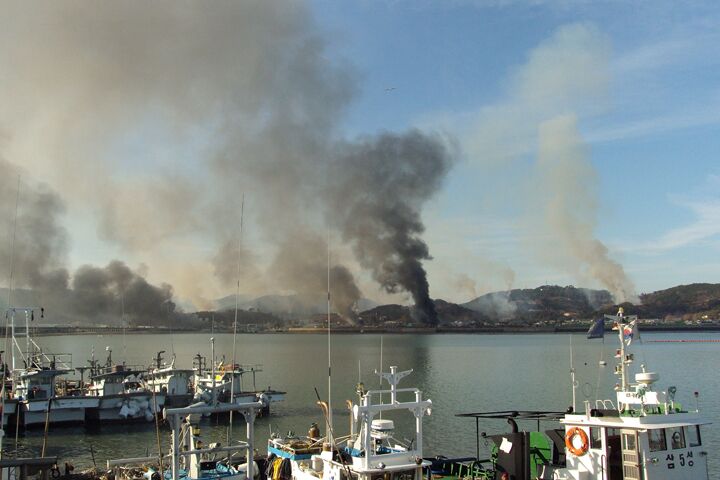
North Korea Develops New Nuclear Technology
North Korea has made stunning progress in its nuclear technology, a nuclear scientist invited to tour the facilities informed the White House a few days ago.
On November 12, Stanford professor and former director of the Los Alamos National Laboratory, Siegfried S. Hecker, along with Stanford colleagues Prof. John W. Lewis and Robert Carlin, visited two new North Korean nuclear facilities that demonstrate that Pyongyang is still committed to its nuclear program, and may have had outside help.
The most disturbing of these facilities was a new uranium enrichment plant that contains 2,000 centrifuges.
“The first look through the windows of the observation deck into the two long high-bay areas was stunning,” said Hecker. “Instead of seeing a few small cascades of centrifuges, which I believed to exist in North Korea, we saw a modern, clean centrifuge plant of more than a thousand centrifuges all neatly aligned and plumbed below us.”
“The control room was astonishingly modern,” he said, later. “Unlike the reprocessing facility and reactor control room, which looked like 1950s U.S. or 1980s Soviet instrumentation, this control room would fit into any modern American processing facility.”
North Korea claims that its enrichment plant is designed to fuel a new type of nuclear reactor currently under construction—the other facility that Hecker visited on his tour.
Hecker reported that the uranium enrichment facility was currently configured to produce low-enriched uranium—material for use in a nuclear reactor, and unsuitable for a nuclear bomb. However, he pointed out that it could be reconfigured pretty easily to produce highly enriched uranium—the type used in bombs.
Hecker said that “the greatest concern” is that North Korea has a secret enrichment facility somewhere else, configured to produce weapons-grade uranium. The facility he visited went completely undetected, so North Korea could easily have another hidden site.
The ability to create its own highly enriched uranium will allow North Korea to produce a new type of nuclear bomb. Its current weapons are made from plutonium. Plutonium is a lot easier to get a hold of than highly enriched uranium—it is a by-product of operations at North Korea’s existing nuclear power plants. However, a plutonium bomb is more complicated than a uranium one, making it harder to build.
These revelations about North Korea’s nuclear program have shocked many in the United States. However, as former U.S. ambassador to the United Nations John Bolton writes, they shouldn’t have.
Bolton writes that the U.S. has been ignoring intelligence regarding North Korea’s nuclear program simply because it didn’t want to believe it.
“The size and scope of the North’s just-revealed facilities will not, however, surprise anyone except those still entranced by the myth that North Korea will voluntarily negotiate away its nuclear weapons,” he writes. “Though our intelligence is imperfect, Pyongyang almost certainly embarked on illicit uranium enrichment even before the ink dried on the Clinton administration’s prized 1994 Agreed Framework. That deal was one of several North Korean pledges to denuclearize, in exchange for tangible benefits from the outside world—every one of which Pyongyang has violated.”
He continues:
The North may once again be testing America’s strategic patience. We must avoid repeating our recent errors. After U.S. intelligence agencies unanimously concluded in mid-2002 that Pyongyang was preparing an industrial-scope enrichment program, the Bush administration decided to confront the North. At a key meeting in October 2002, the North defiantly admitted it was engaged in enrichment. Unfortunately, the U.S. response was to launch the hapless negotiations known as the six-party talks, providing cover for the North’s continued progress on nuclear weapons.
And so North Korea’s nuclear program continues. Talks have not stopped it. North Korea is a testament to the fact that diplomacy alone cannot bring peace.
Further evidence of this was North Korea’s artillery attack on the South Korean island of Yeonpyeong on Tuesday. In March, the North sunk the South Korean ship Cheonan. The U.S. and the South did nothing, and so the North only became pushier.
North Korea’s nuclear program continues to expose the many widely held misconceptions about the world. For more information on the important lessons the West must learn, see our article “Exploding Fictions.”
